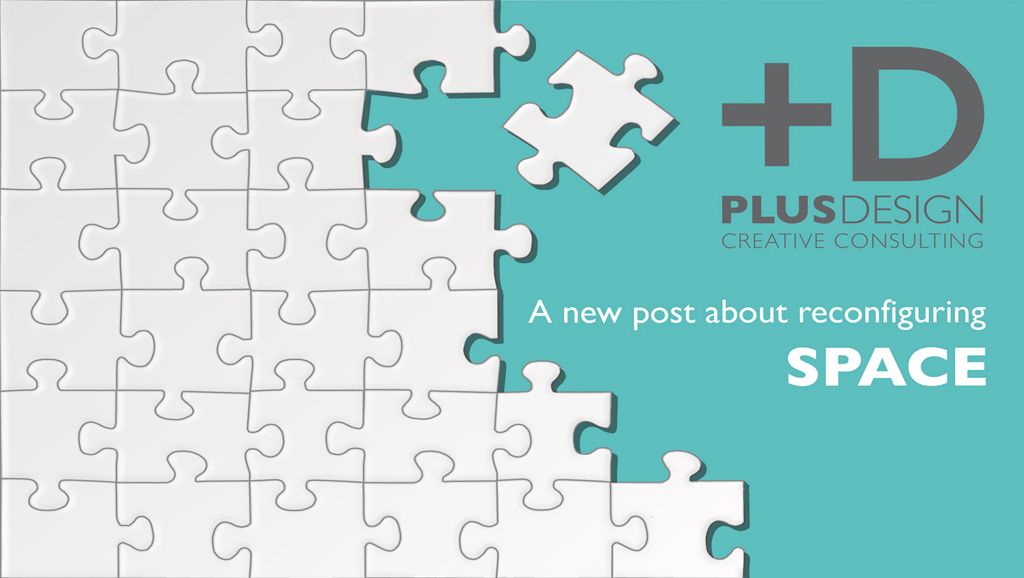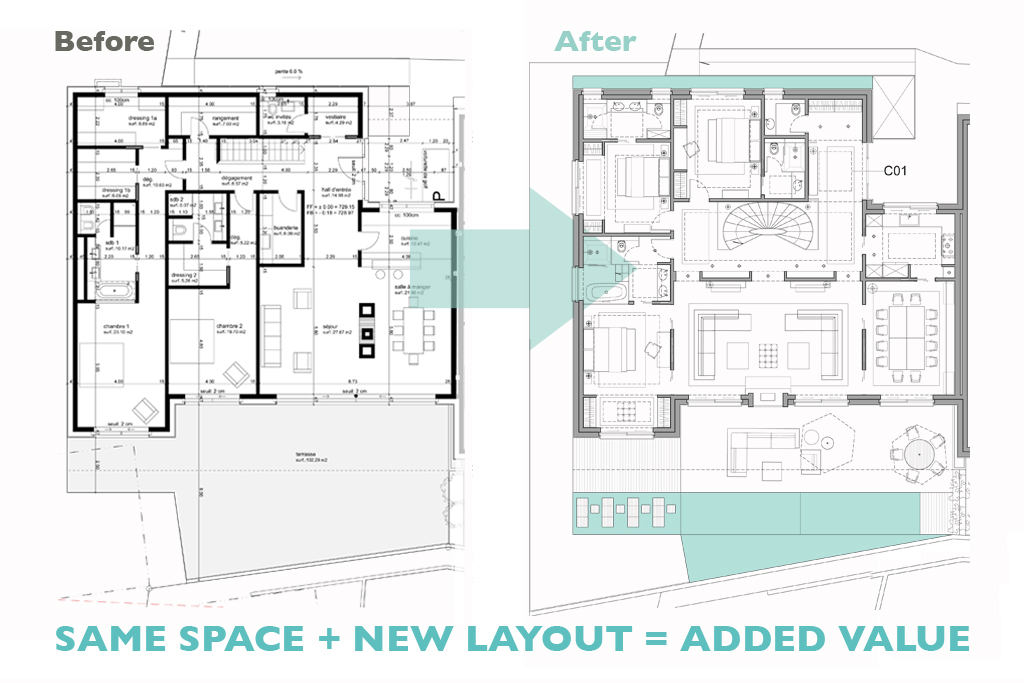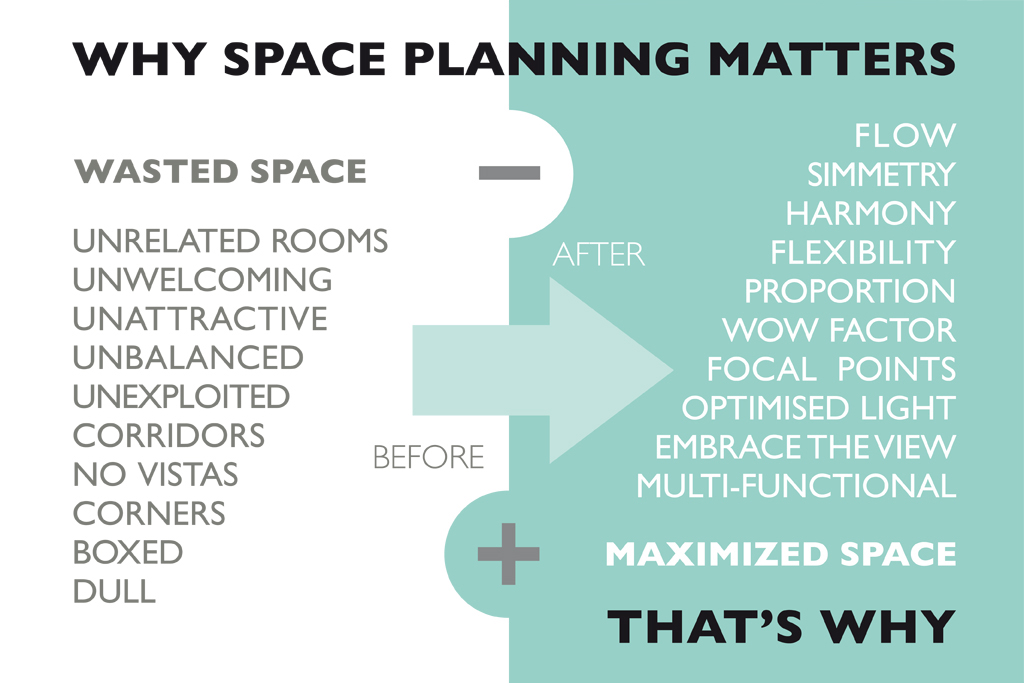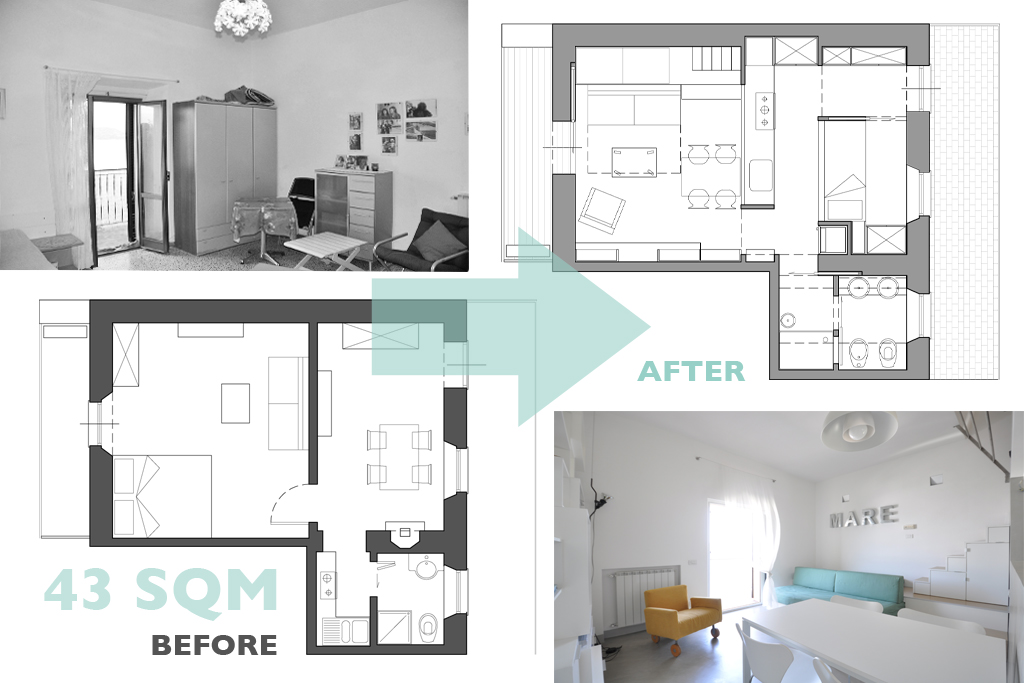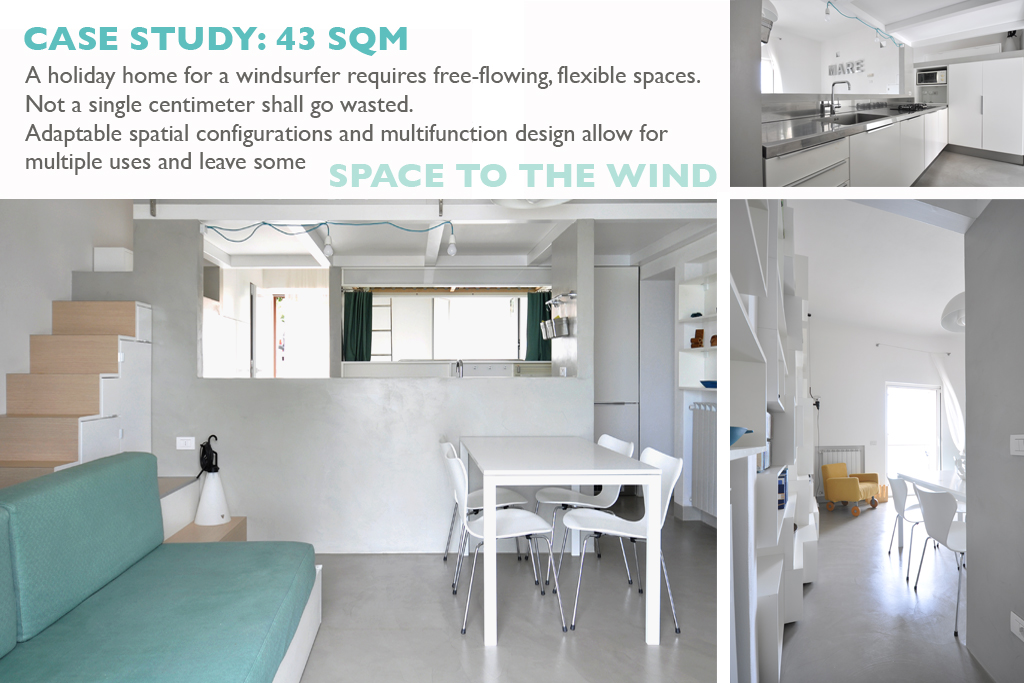
Reconfiguring the SPACE
25-11-2016 11:40
Space planning is one of the most important aspects of interior design.
A good floor plan is like a jigsaw puzzle, where all the pieces have to fit together at the right place to get the final picture. So here are our 5 tips about space.
1. Use it
Space is a simple element to understand, it speaks to the physical boundaries of a room. Typically you do not determine the dimensions of a room, you must find a way to use existing space to your advantage, that’s why space planning is fundamental.
It involves maximum utilization of available space in the most effective manner, according to your needs and requirements.
2. Treasure it
Considering it from a financial perspective, it’s evident that space is one of the most precious assets we have and probably one of the greatest luxury of our time.
Therefore in a well-planned home, space is used to its utmost effect, improving the quality of your everyday life while giving an additional value to your investment.
3. Plan it
The basic structure of a room or building includes the walls, floors, ceiling, doors and windows as well as the beams and columns that support the structure. This is your “blank canvas” to work with: each space has its unique features to be highlighted and functions to be managed, and your goal is to do it beautifully, comfortably and tastefully.
Believe it or not, if it works properly on paper, the room will work well in real life too.
Here’s a selection of projects that shows it.
4. Apply the basic rules
In the first case, there’s an apartment which, despite its generous size, looks inefficient and poorly designed. The plan of the house was reconfigured, both functionally and aesthetically, following some key principles: providing balance and proportion to each space, flow and link between the rooms, embracing the views and enhancing the natural light, creating focal points and adding some statement pieces, such as the oval staircase at the entrance, in order to achieve what is called... the WOW effect!
5. Adapt to context
The second case represents a diametrically opposite situation: in this tiny holiday home not a single square inch goes unused. The project required a flexible use of space and adaptable solutions: multi-functional furnishings and a free-flowing environment allow different configurations. Sliding partitions and interior windows let the light and the wind flow freely across the space. To the delight of the owner, a windsurfing enthusiast!
If you want to see more about these projects and others, please visit our web site.
And remember, even the hardest puzzles have a solution: every piece fits in somewhere, it just takes a while to figure it out.
(0) Comments
